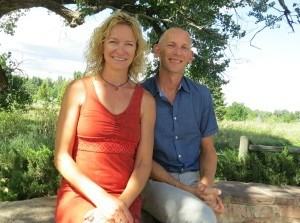For aging researchers, one of the key questions is whether aging can be slowed down to allow people to be healthy longer as they age. Ben Miller and Karyn Hamilton, faculty in Colorado State University’s Department of Health and Exercise Science, recently convened a meeting of Front Range researchers to consider this question.

Miller and Hamilton are the co-directors of the Translational Research on Aging and Chronic Disease Laboratory. Much of their research utilizes a variety of translational models of long life to help them identify shared characteristics of the slowed aging phenotype.
The overarching question posed at the Front Range Consortium on Stress Resistance and Slowed Aging, a conference held Oct. 30 at Fort Collins Brewery, was “What is the evidence that stress resistance is a key characteristic contributing to slowed aging?” The featured speaker was Richard Miller, professor of pathology at the University of Michigan and associate director for research at the University of Michigan Geriatrics Center.
Other speakers
Additional speakers included Tom Johnson, professor at the Institute for Behavioral Genetics at UC Boulder, Susan Bailey, associate professor of Environmental and Radiological Health Sciences at CSU, and Aga Burzynska, assistant professor of Human Development and Family Studies at CSU.
“We are examining a feature, stress resistance, that is thought to slow the aging process,” said Miller, one of the conference organizers. “Slowing aging is not about making people live to 130 years old, but rather to be happy, healthy and functionally independent for a greater proportion of the lifespan. The current viewpoint is that we should be working to increase ‘healthspan,’ which refers to the period of life that is generally healthy and free from serious disease or chronic illness.”
The purpose of the meeting was twofold: 1) to bring together the collective expertise of those along the Front Range to discuss an area of importance related to aging research, and 2) to create local awareness of other research related to slowed aging. The group will submit conference proceedings to Experimental Gerontology for publication, and they hope that the aging-focused consortium will grow to become a regular conference taking place at a Front Range location.
‘Unqualified success’
“The first annual meeting was an unqualified success,”said Barry Braun, head of the Department of Health and Exercise Science. “Attendees raved to me about the unique venue, the terrific speakers, the quality of the discussions in the breakout sessions and the exceptional effort by Drs. Hamilton and Miller in crafting the entire event. It was a model for presenting cutting-edge science in an intellectually stimulating, collegial and convivial setting and an indisputable point of pride for Health and Exercise Science, the College of Health and Human Sciences and CSU.”
Support for this meeting was provided by the Department of Health and Exercise Science and the Columbine Health Systems Center for Healthy Aging at CSU.
The Department of Health and Exercise Science is in the College of Health and Human Sciences at CSU.
If you are interested in participating as a subject in the research of Hamilton and Miller, see the TRACD website for more information.